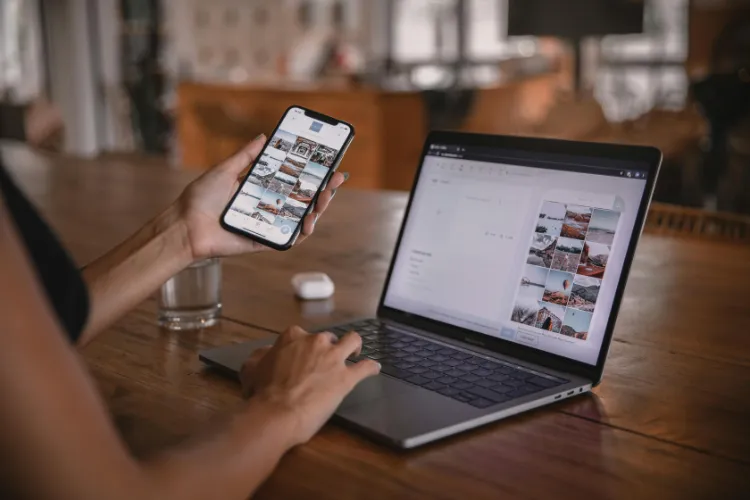In today's app-driven world, having a great idea isn't enough. The key to turning your app into a revenue-generating machine lies in choosing the right monetization strategy.
And with 2024 on the horizon, the app market is more competitive and lucrative, than ever. But how do you unlock that magic $1M revenue mark?
By adopting the proven monetization strategies that successful apps are using right now.
In this article, we'll explore the best monetization models for 2024 and how you can apply them to your app to generate serious income.

What Is App Monetization and Why Should You Care?
Let's start with the basics: App monetization is the process of turning your app into a revenue-generating asset. Whether you're charging users to download your app or using ads to make money off a free version, monetization is essential to building a sustainable business.
Why Does Monetization Matter?
- Sustainability: Without a solid revenue model, even the most innovative apps can struggle to stay afloat.
- Scalability: The right monetization strategy helps you grow your app while ensuring your revenue scales alongside it.
- Profitability: At the end of the day, you want your app to be profitable. Choosing the best way to monetize your app is the difference between making a few bucks and hitting that million-dollar mark.
With monetization models evolving rapidly, especially as more users prefer free apps, understanding which strategy works best for your app is crucial.
Top App Monetization Models for 2024
So, what are the most effective ways to make money from your app in 2024? Let's dive into the top strategies.
1. In-App Purchases (IAP)
In-app purchases are a tried-and-true revenue model, especially for gaming and entertainment apps. With this model, users can download the app for free but are encouraged to purchase items within the app—whether that’s virtual goods, upgrades, or additional features.
- How It Works: Users can buy digital goods (like skins, upgrades, or power-ups) or access premium content through microtransactions.
- Best Practices: Keep in-app purchases optional but enticing. Offering items like special features or game enhancements without making them feel "required" will keep users engaged.
- Success Story: Look no further than gaming giants like Fortnite and Candy Crush, which have made billions thanks to in-app purchases.
By making sure users feel like they're gaining value from their purchases, you can drive more revenue while keeping the app experience enjoyable.
2. Subscription Models
The subscription model is exploding in popularity—and for good reason. It provides a recurring revenue stream, which offers more stability than one-time purchases. Apps like Spotify and Netflix have shown just how powerful this strategy can be.
- How It Works: Users pay a recurring fee (monthly or annually) to access premium features or exclusive content.
- Different Types of Subscriptions: You can offer tiered plans to appeal to different types of users. For example, a basic plan for casual users and a premium plan with added perks for power users.
- Why It's Gaining Momentum: Users are becoming more comfortable with subscriptions, particularly for services that offer ongoing value like fitness, entertainment, and productivity apps.
If your app can provide continuous value—like new content or features regularly—subscriptions can unlock a steady revenue stream.
3. In-App Advertising
Advertising within apps is one of the most popular ways to monetize free apps. It's perfect for apps that get a lot of daily or monthly active users (DAUs/MAUs), and with careful planning, you can make a significant amount without annoying your users.
- How It Works: Display ads within your app, such as banners, video ads, or even rewarded ads (where users watch an ad to earn in-app rewards).
- Best Practices: Placement and timing are everything. Avoid bombarding users with ads too frequently. Ads that feel intrusive will drive users away, while well-placed ads can be tolerated or even enjoyed if done right.
- New Trends in 2024: Native ads (ads that blend seamlessly with your app's content) and rewarded video ads are expected to be huge in 2024.
A good balance is key. By being smart about ad frequency and format, you can maximize revenue without driving away your user base.
4. Affiliate Marketing & Partnerships
Affiliate marketing is a lesser-known but highly effective app monetization strategy, particularly for apps in niche industries. By promoting products or services that are relevant to your app's users, you can earn commissions without relying on in-app purchases or ads.
- How It Works: Your app promotes third-party products or services through special links. When a user makes a purchase via your app, you earn a commission.
- Best for Certain Industries: Apps in industries like fitness, travel, or finance can benefit the most from affiliate marketing.
- Example: A travel app can partner with hotels or airlines, earning a commission for every booking made through their app.
This strategy works best when you build affiliate marketing into your app's core experience, ensuring the recommendations feel authentic and helpful.
5. Paid Apps (One-Time Purchase)
While the one-time paid app model is becoming less popular, it's still viable for certain types of apps, especially those that offer a unique, high-value service.
- How It Works: Users pay a one-time fee to download your app.
- Challenges: In 2024, users are generally more reluctant to pay upfront when they can access free alternatives. This model works best for apps with niche markets or specific business tools.
- When It Works: Enterprise apps, highly specialized tools, and unique consumer apps with no strong free competitors can still succeed with this model.
Consider this model if your app offers something truly unique and valuable that users are willing to pay for upfront.
6. Freemium Model
The freemium model is one of the most popular ways to monetize apps, combining the best of both worlds: giving users free access to the basic features while charging for premium features.
- How It Works: Users can access a free version of your app with limited functionality. To unlock more advanced features, they must pay.
- Best Practices: Make the free version good enough to attract users, but offer premium features that solve deeper problems or offer more value. Conversion depends on providing users with just enough incentive to upgrade.
- Example: Spotify and Dropbox have nailed this model, allowing free users access to basic services while offering enticing premium features.
The freemium model can create a wide user base quickly, and as users see the value, many will convert to paid subscribers.
How to Choose the Right Monetization Model
With so many options, how do you choose the right monetization strategy for your app?
Consider Your Target Audience
Understand who your users are and what they're willing to pay for. For example, younger audiences might prefer apps with free content supported by ads, while professionals may be more open to subscription models that offer continuous value.
App Type and Industry
Certain strategies work better for specific types of apps. Gaming apps thrive on in-app purchases, while productivity tools often find success with subscriptions or freemium models.
Long-Term vs. Short-Term Revenue
Are you looking for quick revenue or long-term growth? In-app advertising and one-time purchases can generate quick returns, while subscriptions and freemium models focus on building a loyal, paying user base over time.
Combining Monetization Models
Many successful apps combine multiple models to maximize revenue. For example, you could offer in-app purchases in a free app while also displaying non-intrusive ads. A hybrid strategy can give you the best of both worlds.
Key Metrics for Monetization Success
To hit that $1M revenue mark, it's important to track key metrics:
- ARPU (Average Revenue Per User): The average amount each user generates for your app.
- Conversion Rates: The percentage of free users who upgrade to a paid version or make in-app purchases.
- Retention Rates: How long users stick with your app—higher retention means more opportunities for monetization.
- LTV (Lifetime Value): The total value a user brings to your app over their lifetime.
By monitoring these metrics, you can adjust your strategy and optimize your revenue potential.
Avoid Common Monetization Pitfalls
A few common mistakes can kill your app's revenue potential:
- Overloading Ads: Too many ads can frustrate users and lead to high churn.
- Underpricing Premium Features: Make sure you're charging what your product is worth.
- Ignoring UX: Always prioritize a smooth, enjoyable user experience, even when implementing monetization strategies.
Ready to Monetize Your App?
App monetization is the key to turning your idea into a profitable venture. By choosing the right strategy, focusing on your audience, and tracking the right metrics, you can unlock $1M in revenue (and beyond) in 2024.
Partnering with an experienced app development company can help you choose the best monetization approach, integrate it seamlessly into your app, and ensure your path to financial success.
Ready to get started? Reach out today, and let's make your app a revenue-generating powerhouse!
Need app developers, call us today!
We are a team of experienced app developers in the UK, but we work with clients all over the world.
Call now +44 (0) 7798 834 159

